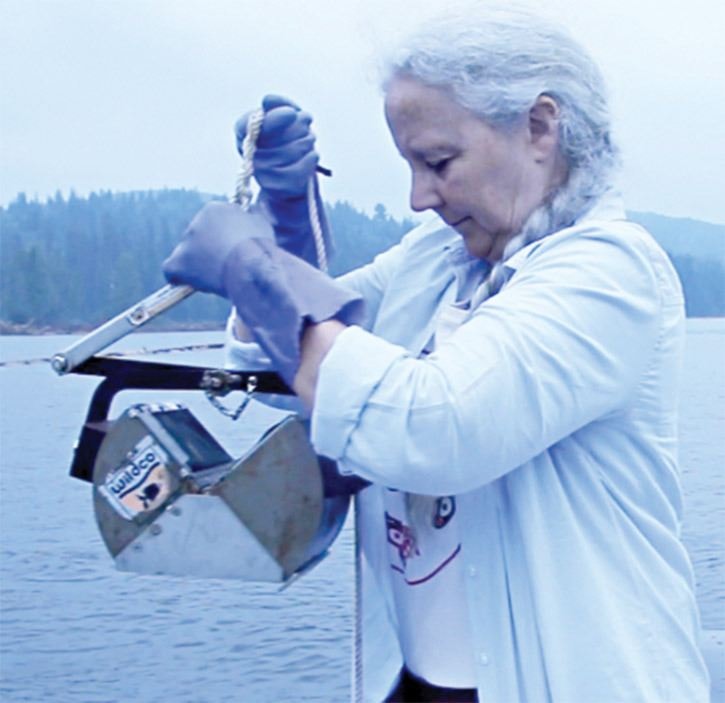Many pundits and experts are commenting on Mount Polley Mine’s tailing pond spill from afar, but independent marine biologist Alexandra Morton came to the Cariboo last weekend to have a look for herself.
She didn’t like what she saw.
“I am only a visitor to this disaster, but it has strengthened my resolve to do what I can to stop the stupidity of government that seems only interested in pillaging our home,” Morton said.
Morton has dedicated her life to protecting salmon.
As executive director of the Department of Wild Salmon, she works with salmon groups, First Nations, university departments, and labs, and she has published extensively on the impact of salmon farms on both salmon and whales.
She made this trip at the request of First Nations who live along the Fraser River, and while here she was guided by local residents who have a good knowledge of the area.
She specifically visited Hazeltine Creek, Polley Lake and Likely.
She took samples of water and sediment along with photos and videos, and she met with people who live in the impacted area.
One quarter of this year’s Fraser Sockeye run is expected to return to Quesnel Lake and she is concerned for their welfare.
“All those salmon will have swum past the waste on the sea (lake) floor that I sampled, and though the plume of mine tailings still pouring 13 days later into Quesnel Lake. No one knows what will happen to them,” she said.
Although impacted areas have been declared off limits to the public, Morton and her team accessed the Hazeltine Creek area by boat, landed at the Raft Creek campsite and walked from there to the creek without seeing one readable warning sign.
She said it was a “visit to hell.”
She was particularly pained to see the many animal tracks going across what she described as a wasteland and into the liquid of Hazeltine Creek.
“The pock-marked, caked substrate looked like bubbles had burst as it was drying. There were burnt-looking formations that bore no resemblance to anything I have seen, formed as the tailing waste reacted to oxygen,” she said.
She travelled by quad to get samples from Polley Lake where a lot of the tailings pond water ended up.
She said they met a road block on the way.
Another concern is the mysterious blue stuff on many places on Quesnel Lake.
“It looks like hot bacon grease thrown on cold water and it smells bad,” she said “When you touch it, it burns your skin like a jelly fish sting.”
She notified Interior Health about this was told the Ministry of Environment was taking samples for analysis. Morton took samples too.
She said the UNBC people and Fraser River Keepers have been taking samples but the difficulty is finding money to have them analyzed.
As for the breach itself, Morton doesn’t mince words.
She said earthen berms don’t hold water and yet the warnings, engineering, and common sense were ignored.
She said it’s preposterous to believe Imperial Mines can’t build a proper berm but corporations do take short cuts to please shareholders who never see the site.
She said both the provincial and federal governments are sadly remiss in setting standards and monitoring to ensure those standards are met, and this has been a “horrible failure” on their part.
She said she’s been dealing with government bureaucrats for 25 years and “this is the same behaviour I deal with regarding farm salmon viruses. The warnings are ignored.”
She has posted the story of her trip on her blog, http://alexandramorton.typepad.com/alexandra_morton/2014/08/been-to-hell.html#sthash.sxHwnC2L.dpuf.
